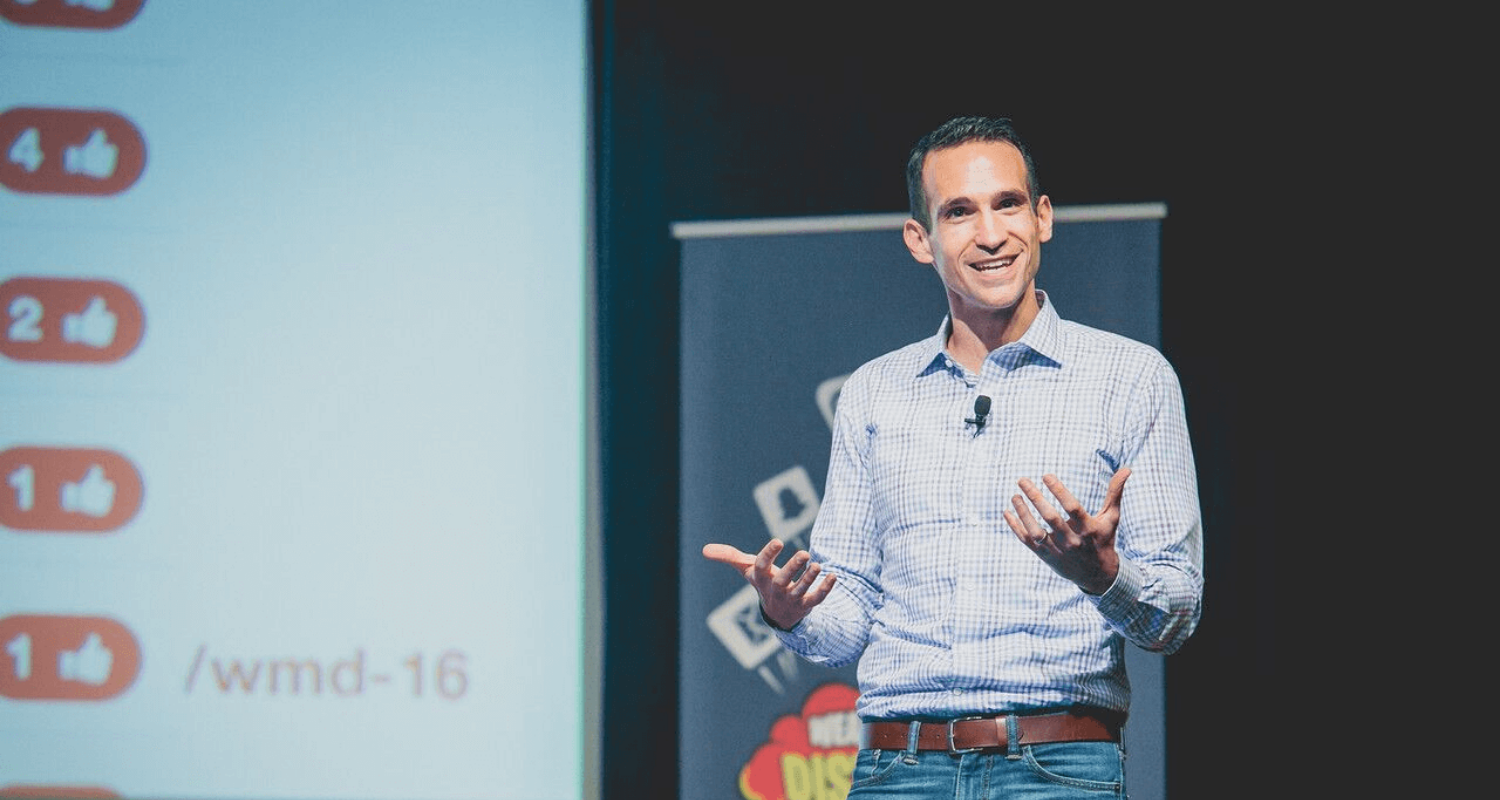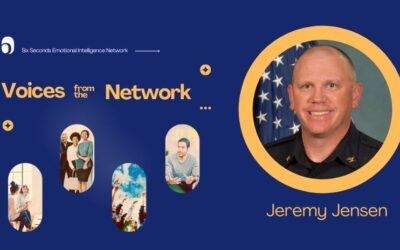Addicted to Your Smartphone? Not So Fast
Stanford professor Nir Eyal says the problem isn’t the technology, it’s us – and offers tips to take back control of our attention and our lives
By Michael Miller – January 8th, 2019

“Tech companies understand what makes you tick and click better than you do,” asserts Stanford professor Nir Eyal, and he would know. In fact, he’s partly to blame. Eyal’s blockbuster book, “Hooked,” was the blueprint Silicon Valley followed to create habit-forming technology. But amid rising concerns about tech “addiction” and people’s inability to stop scrolling, Eyal says we’re missing the real problem. In his new book, “Indistractable,” he focuses on the root emotional causes of tech misuse and offers tools to regain control of your attention and your life.
Are you a blamer or a shamer?
“The narrative is that tech is addicting, it’s hijacking people’s brains, and there’s nothing we can do about it,” Eyal explains. “But that is such a disempowering mindset. It’s learned helplessness.”
Within this narrative, Eyal says, most people fall into one of two categories: blamers and shamers. Blamers say it’s the technology – tech companies make me an addict. Smartphones are just too seductive to resist. Shamers, on the other hand, look inward. They say, “I’m broken. I have an addictive personality. I can’t help it.” While the focus is different, both groups subscribe to a belief that they are simply along for the ride – that there’s nothing they can do to change their relationship with technology. These belief systems become self-fulfilling prophecies, and build a superhighway for people to avoid responsibility for their choices.
Do you have to binge on Netflix?
Eyal compares people’s belief in tech addiction to another discredited theory: ego depletion, which is the belief that willpower is a depleting resource. That, in a given day, your willpower can run low like a gas tank. This leads people to tell themselves that because they’re exhausted after a long day, they deserve to watch Netflix and eat a pint of Ben & Jerry’s. That’s ego depletion in action. But research has found that ego depletion only exists among one group of people: those who believe in ego depletion. By believing that you don’t have the power of choice, you take it away from yourself.
Similarly, he says that if you believe tech is hijacking your brain and there’s nothing you can do about it, it’s a self-fulfilling prophecy. It becomes true because you believe it.
But according to Eyal, technology isn’t the trigger, it’s a coping mechanism. And if we want to change the behavior, we need to focus on the emotional triggers driving the behavior – the part of the iceberg that’s beneath the surface. We need to be smarter with feelings. “If you don’t have the skills to become indistractable,” Eyal says, “no doubt they will get you.” And the skills to become indistractible are the skills of emotional intelligence.
How to Become Indistractible with Emotional Intelligence
Eyal’s proposed solution is a near perfect match with the Six Seconds Model of EQ. It starts with self-awareness. “First ask yourself, when do I give in to this?” Eyal says. “What is the emotional trigger I am looking to escape? Is it stress? Anxiety? Fatigue? Loneliness? When I use this, what is it that I am trying to escape? When we’re lonely, we check Facebook. When we’re bored, we check YouTube, Reddit or Instagram. Bring awareness to the psychological discomfort driving the behavior.” That self-awareness opens the door to make different choices.
Once you have that increased self-awareness, how can you choose to use technology more intentionally, whether it’s at home or at work? Conventional thinking says, “Get rid of the distraction.” No more social media, or email, or whatever it is. But for most people, that isn’t reasonable, nor is that even what they really want. Technology is fun! And helpful. Instead, Eyal recommends marking out time for using it, but on your terms. To do so, he recommends trying “time boxing” or creating a “time box calendar,” which basically means planning out every minute of your day, including time for Slack and emails at work, or time at home for social media. The point is to take things that randomly distract us throughout the day – the “rings, dings, pings and things” – and set aside time for them. Then instead of habitually reverting to tech use as a coping mechanism or just out of habit, we consciously choose how to engage. We see that we have options and think strategically about the pros and cons of each course of action. That’s the Choose Yourself part of the Six Seconds Model of EQ.
And finally, Eyal says you must connect these choices about tech use and time management with your values. This infuses them with importance, relevance and staying power. “Start with your values, which are the attributes of the person you’d like to become.” Then look at your calendar and make sure you have made time for your values. “Many of us talk a big game about values, myself included. If someone had asked me years ago, ‘What’s important to you, Nir?’ I would have said, ‘Well, my health, my family, my relationships. But if you looked at my calendar, you wouldn’t see any of that. Today, I have turned my values into time.’”
This goes far beyond just limiting technology use: “How we spend our time is really the sum totality of who we are. These little choices add up to big, profound choices about who and what you prioritize.”
4 Practical Tips to Practicing Better Tech Habits
Eyal offers 4 practical tips to recognize, manage and transform habits of tech misuse. We’ve arranged them into a free download, which we are happy to email you.

What’s new in emotional intelligence?
Emotional Intelligence at Work: The Free, Easy Win Most Managers Are Missing
Gallup study compares the biggest gaps in employee vs. manager perceptions. What are managers’ worst blind spots? What are easy wins they could do better to improve team performance?
Is Boredom Bad for Kids? Emotional Intelligence Education News
Let’s unpack boredom and how emotional intelligence can help you with tips to support bored children (and keep your cool!). Keep reading for EQ research and resources you can use for you, your faculty and students.
Effective Emotional Intelligence Coaching: 4 Questions to Improve Client Outcomes with Social and Cultural Insights on Emotions
Improve your emotional intelligence coaching by understanding the social and cultural influences on emotions. Ask these 4 key questions for more effective client relationships
Krish and Anabel: SEL Pioneer and Mentee Share 6 Life Lessons on Empathy, Integrity, and Emotional Intelligence
What are 6 life lessons you’ve learned? Dr. Anabel Jensen, SEL pioneer and Six Seconds President, explores this important question with her 16-year-old mentee.
Voices from the Network: Jeremy Jensen
In this Voices from the Network, we sit down with Police Chief Jeremy Jensen, who is doing emotional intelligence training with his officers in Dubuque, Iowa.
Emotional Intelligence at Work: Is There Hope for Toxic Workplaces?
The remarkable transformation at Westcomm Pump offers a blueprint for turning around workplaces with depleted morale and trust issues, using the Team Vital Signs assessment.
- Pursue Noble Goals in the Six Seconds Model of EQ - July 29, 2023
- Increase Empathy in the Six Seconds Model of EQ - July 26, 2023
- Exercise Optimism - July 24, 2023






